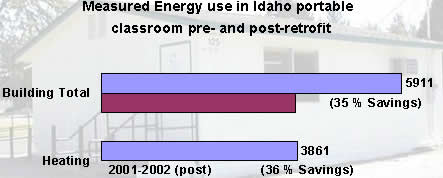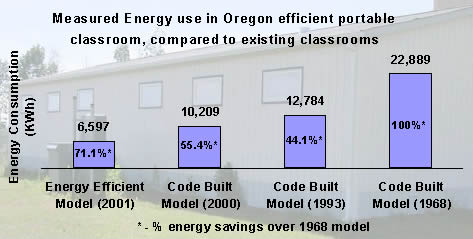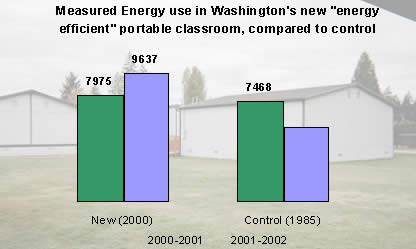| |
|
| |
| Reference
Publication:
Chandra, Subrato, Neil Moyer, Danny Parker, David Beal,
David Chasar, Eric Martin, Janet McIlvaine, Ross McCluney,
Andrew Gordon, Mike Lubliner, Mike McSorley, Ken Fonorow,
Mike Mullens, Mark McGinley, Stephanie Hutchinson, David
Hoak, and Linda Tozer. Building America Industrialized
Housing Partnership, Annual Report - Fourth Budget Period.
04/01/03-03/31/04. |
|
|
| Building
America Industrialized Housing Partnership, Annual
Report - Fourth Budget Period |
|
|
Subrato
Chandra, Neil
Moyer, Danny
Parker, David
Beal, David
Chasar, Eric
Martin, Janet
McIlvaine, Ross
McCluney, Andrew
Gordon, Mike
Lubliner, Mike McSorley, Ken
Fonorow, Mike
Mullens, Mark
McGinley, Stephanie
Hutchinson, David
Hoak, and Linda Tozer |
|
| Florida
Solar Energy Center |
|
| |
|
|
Article
published in “Automated Builder Magazine,” August
2003.
Northwest Portable Classroom Study
Michael Baechler, Pacific Northwest National Laboratory
Andrew Gordon, Washington State University Energy Program
Record
numbers of students, demands for smaller class size, shrinking
budgets, and growing infrastructure costs are spurring
demand for portable classrooms in America’s schools.
Sixty-five percent of schools in the West report using portable
classrooms; thirty-six percent nationwide do so. Over 180,000
students attend school in about 6000 portables in the Northwest.
New portable classroom installations are increasing at a
rate of 5 percent per year. Nationally, the use of portable
classrooms is expected to grow throughout the century.
In
the Northwest, the US Department of Energy’s Building
America Industrialized Housing Partnership is exploring ways
of making portable classrooms more efficient and better for
learning. The Northwest state energy offices and Pacific
Northwest National Laboratory, (PNNL) are using building
science to examine energy consumption, lighting and ventilation
to make these classrooms more comfortable and better value
investments.
The
Building America team studied both new, energy efficient
portable classrooms in Oregon and Washington, and a retrofitted
classroom (originally built in the 1970s) in Idaho. For
all of the classrooms, team members installed monitoring
equipment, collected data and performed tests to measure
air leakage and indoor air quality. In the Oregon classroom,
team members provided the school district with procurement
specifications for a highly efficient classroom, including
day lighting requirements. In the Idaho classroom, team
members performed audits and monitored energy consumption
pre- and post-retrofit to measure effectiveness. Washington
team members also monitored a control classroom, built
in 1985, to provide comparison data.
Preliminary findings indicate that simple, low cost measures
can do much to reduce energy costs and increase efficiency.
 Key
findings include: Key
findings include:
- Retrofitting
energy saving measures to the Idaho classroom resulted
in measured 35 percent energy savings.
- T-8
lighting fixtures with electronic ballasts are cal-culated
cost effective in both new and existing buildings.
 In
the field, it was observed that programmable thermostats
do only part of the job if they cannot be turned
off for holidays. If they can be programmed for automatic
holiday shutdown, all the better. In
the field, it was observed that programmable thermostats
do only part of the job if they cannot be turned
off for holidays. If they can be programmed for automatic
holiday shutdown, all the better. - A
new classroom built to enhanced standards above Oregon
code resulted in a measured 35 percent savings in comparison
with a new unit built to existing code.
- Field
observations indicate that controlling HVAC equipment
with volatile organic compound (VOC) sensors can be problematic,
as VOCs tend to be off-gassed in the first year of the
classroom’s
occupancy.
- Heating
and ventilation controls that operate by measuring carbon
dioxide were also not proven to be effective; however,
more stable CO2 based controllers may be available in
the future.
- Additional
high-efficiency operable windows, located on opposite
walls, provide needed day lighting and ventilation.
- Air
leakage through T-bar ceilings can lead to substantial
energy loss and inefficient ventilation.
The new Washington classroom had over twice the air leakage - 19 ACH at 50
Pa than the control classroom - 9 ACH @ 50 Pa.
- Commissioning
the HVAC system is a critical component to efficient
and healthy operation of the classroom, and should
include air sealing of the marriage line and other leaks,
balancing of the HVAC system, and proper thermostat programming.
-
 Education
of school district maintenance staff and teachers in
the operation of the classroom’s
HVAC system is an essential part of ensuring
efficient system operation Education
of school district maintenance staff and teachers in
the operation of the classroom’s
HVAC system is an essential part of ensuring
efficient system operation
The monitoring data from the Washington portable classrooms
provides an excellent illustration of the importance of some
of these findings. As seen in the adjacent graph, the new
portable classroom consumed significantly more energy than
the control classroom. This was attributable to two major
factors:
- Tests
indicated twice the air leakage in the new classroom
than in the control; additional tests indicate the
predominant leakage path is through the T-bar ceiling.
- Misunderstanding
regarding the proper installation and commissioning of
the HVAC system led to excessive operation of the exhaust
fan during weekends, holidays and summer vacation. In
addition, misunderstanding regarding the proper operation
of the system led to comfort problems, resulting
in the introduction of electric space heaters in the winter of 2001-2002.
Future project work will include developing guidelines for
the purchase, construction, set up, and operation of portable
classrooms; preparing recommendations for low-emitting paints,
furniture and flooring; and designing an advanced portable
classroom that incorporates special roof sealing, natural
day lighting, and renewable resources.
To learn more, contact:
|
Disclaimer:
This report was prepared as an account of work sponsored by an agency
of the United States government. Neither the United States government
nor any agency thereof, nor any of their employees, makes any
warranty, express or implied, or assumes any legal liability
or responsibility for the accuracy, completeness, or usefulness
of any information, apparatus, product, or process disclosed,
or represents that its use would not infringe privately owned
rights. Reference herein to any specific commercial product,
process, or service by trade name, trademark, manufacturer,
or otherwise does not necessarily constitute or imply its endorsement,
recommendation, or favoring by the United States government
or any agency thereof. The views and opinions of authors expressed
herein do not necessarily state or reflect those of the United
States government or any agency thereof.
|




 Key
findings include:
Key
findings include: In
the field, it was observed that programmable thermostats
do only part of the job if they cannot be turned
off for holidays. If they can be programmed for automatic
holiday shutdown, all the better.
In
the field, it was observed that programmable thermostats
do only part of the job if they cannot be turned
off for holidays. If they can be programmed for automatic
holiday shutdown, all the better.  Education
of school district maintenance staff and teachers in
the operation of the classroom’s
HVAC system is an essential part of ensuring
efficient system operation
Education
of school district maintenance staff and teachers in
the operation of the classroom’s
HVAC system is an essential part of ensuring
efficient system operation